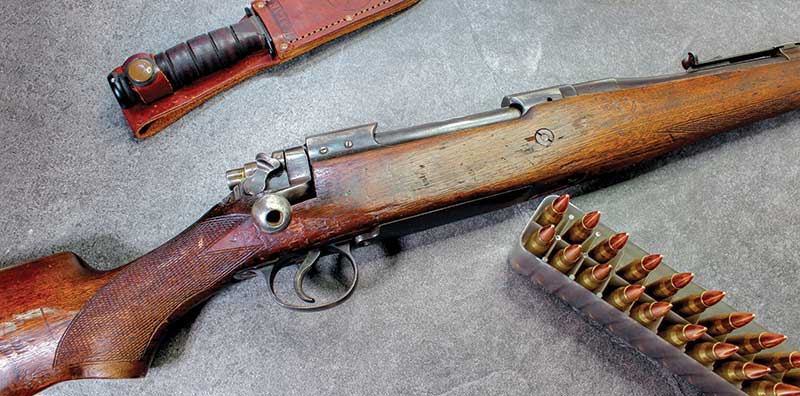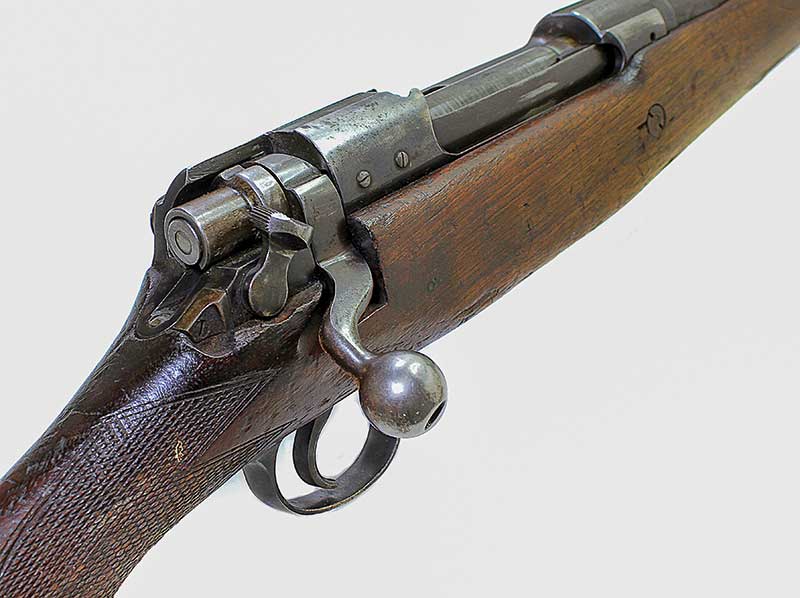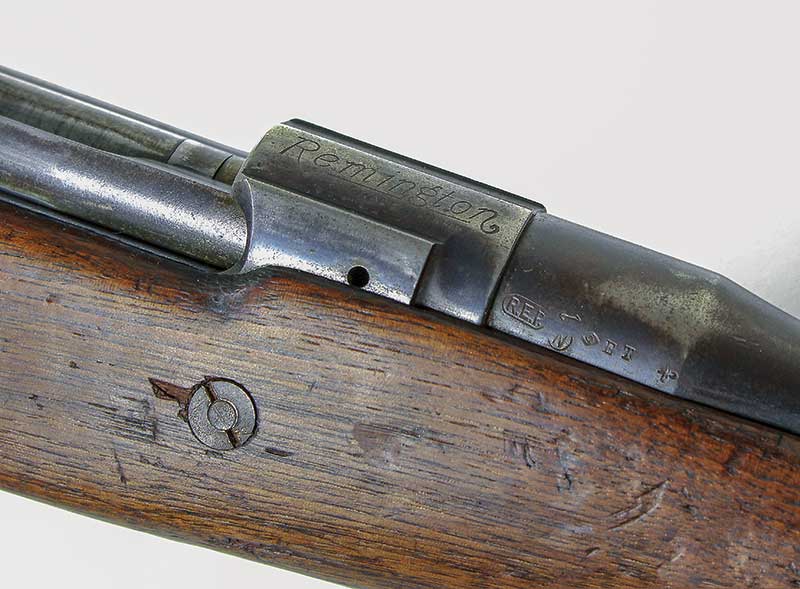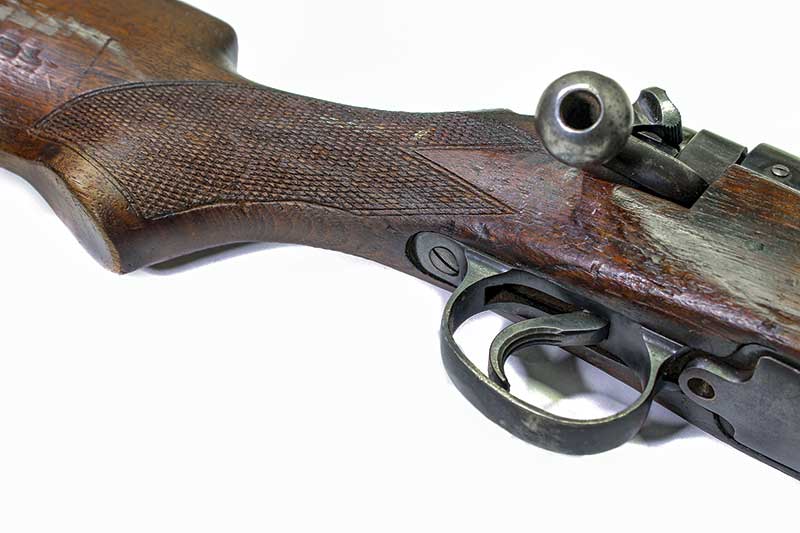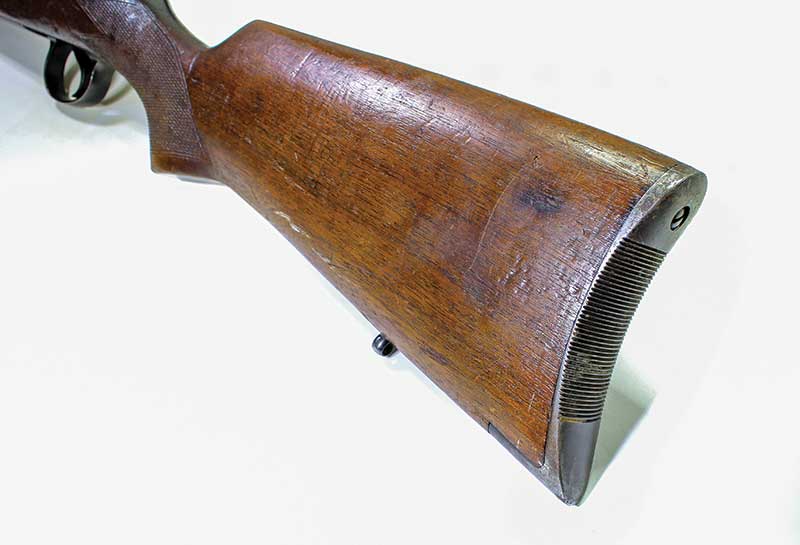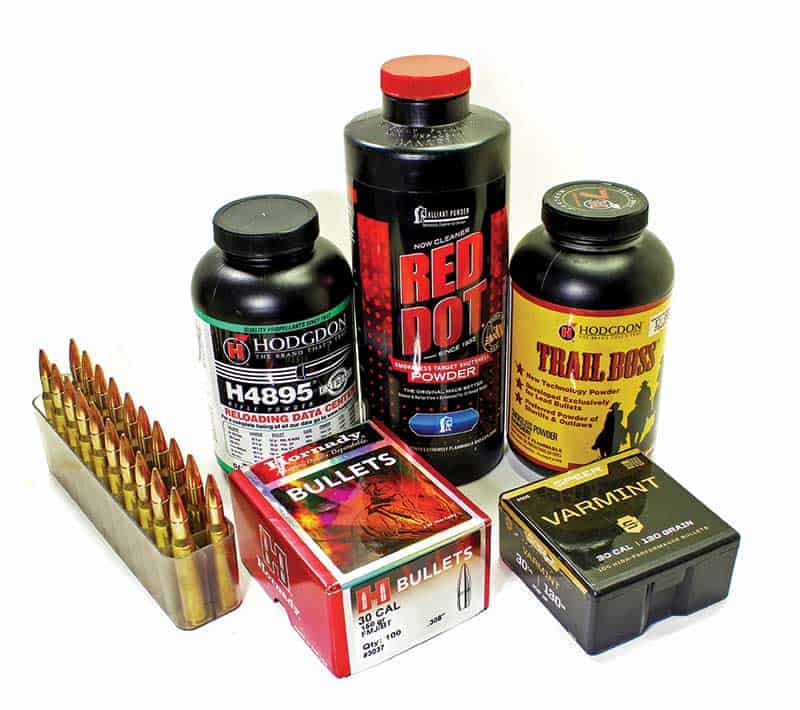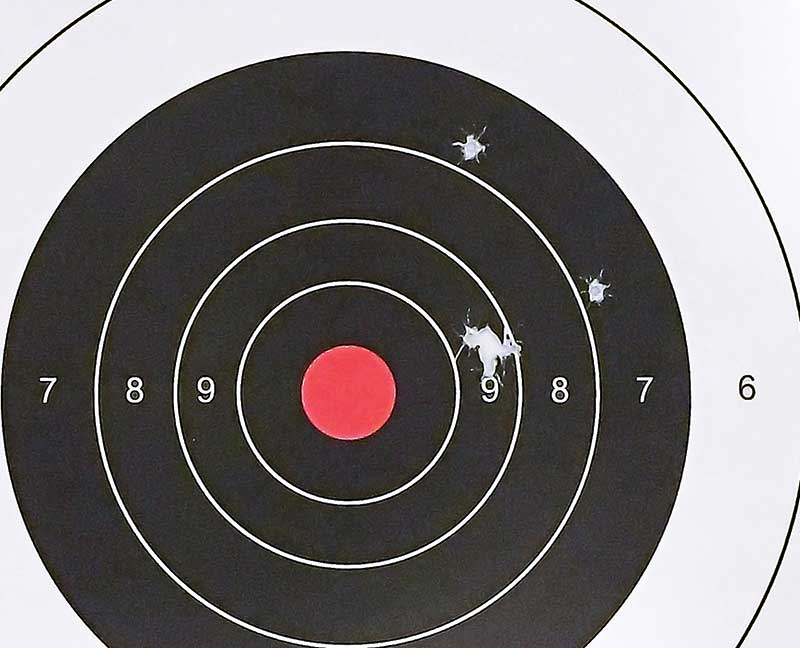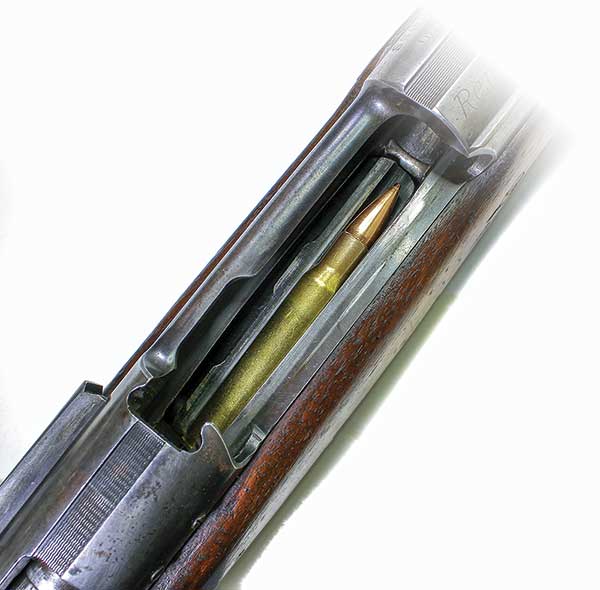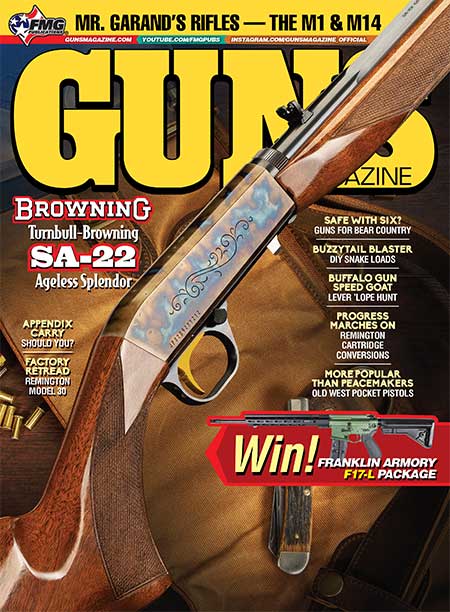Remington Model 30
A Fighting Rifle's Second Act
Our story begins back in the Boer War of 1899. In their skirmishes with the South African republics, and despite the sizable numeric differences in their fighting forces, the British found the various guerillas and irregulars were shooting their men to pieces. A good part of the cause came down to a difference in armament — the 7mm Mauser rifles used by the Boers outranged and outshot the various Lee-Enfields and Lee-Metfords chambered in .303 British.
Though the British proved the victors of the conflict, the Boers left the Empire licking its wounds and with the desire to field a gee-whiz rifle and cartridge combination of its own. By 1913, those efforts coalesced into the .276 Enfield round, which pushed a 165-grain bullet at about 2,800 feet per second, along with a shiny new launching platform built to accommodate the round’s greater length and pressure: the P13 (“Pattern 13”) rifle.
Going Backward
The rifle was well-received, but logistics are everything in matters of war. As soon as the British were sucked into WWI, the ballistic advantages of the .276 Enfield took a back seat to accommodating the .303, a legacy round if there ever was one. The P13 begat the .303-chambered P14, which would be produced by Remington and Winchester under contract for the British government to the tune of more than a million rifles.
As we all know, the United States would come to find itself embroiled in the same conflict. Over the duration of the Great War, American military enrollment would increase from about 200,000 soldiers to approximately 4 million. Given we began the fighting with only about 500,000 to 800,000 Springfield 1903s, and considering neither Springfield Armory nor Rock Island Arsenal could accommodate the greater demand, the nation had a bonafide math problem to solve.
Fortunately, the P14s being produced by Remington and Winchester provided an immediate and effective solution. Since the P14 was already designed for a higher-pressure, longer cartridge that never came to be, rechambering the rifle for the .30-06 was relatively straightforward. This gun-and-cartridge configuration became known as the M1917.
While we think of the ’03 Springfield as the iconic long arm of American “Doughboys,” the reality is the M1917 was produced in far greater numbers. Across Winchester, Remington, and Eddystone, a factory subcontracted by Remington more than 2 million M1917s would be produced throughout WWI. Let’s put this number into perspective: During the war, about seven of every eight rifles produced in America were M1917s and the Eddystone factory alone was making about 5,000 of them a day.
The Tap Runs Dry
Sure, the end of mass international conflict is a net boon for humanity, but it certainly wasn’t good for Remington’s bottom line. At the end of 1918, the company had a massive supply of P14 parts and virtually no further demand for assembled M1917s. With this in mind, Remington gussied up the P14 into a hunting rifle and the Model 30 was born.
Beyond simple economics and sheer pragmatism, it should be noted Remington’s idea had legs. Consider World War I turned millions of Americans into riflemen and made them familiar with operating a bolt action. Prior to this point, the prototypical American “hunting rifle” was a lever-action, though pump actions and some early semi-autos had their share of fans. Remington, however, reasoned the returning GI might want something he was already familiar with as he transitioned from the battleground to the brush.
Feature-wise, the Model 30 would be distinguished from its military contract brethren thanks to a sporter-length stock with a Schnabel fore end, a straightened and less ungainly looking floorplate, a grooved metal butt plate, hand-checkering, a better finish and a receiver-mounted Lyman sight (at least on earlier models). Remington also deleted the characteristic “wings” around the rear sight of the P14 / M1917, making it look a little more genteel.
Mission Accomplished?
At this point, some might wonder how successfully Remington transformed a P14 into a true-blue hunting rifle. It depends who you ask. There are some who see the Model 30 as something of a “kludged” effort and the remnants of the P14 aren’t hard to find when you go looking for them. Certainly, the dog-leg bolt handle, big safety and chunky receiver are characteristics of the M1917 and equally present on the Model 30. Also consider in 1936, Winchester released its iconic Model 70. In direct comparison, Remington’s then-flagship rifle seemed inexcusably heavy and crude to no small number of shooters.
Admittedly, I’ve always found the lines of the classic American hunting rifle to be so ubiquitous as to be boring — and yes, in the interests of full disclosure, I’d put Winchester’s Model 70 on the list. The Remington Model 30, in contrast, is very “steampunk,” as the kids say. The stock makes some attempt at refinement but it’s betrayed by all of the levers, right angles and moving bits at the rear of the receiver. Though I doubt it was Remington’s intention, the Model 30 leans into the idea of a rifle as a mechanical instrument and it was what drew me to the platform to begin with. My rifle has no shortage of nicks and dings and its general “junkyard dog” aesthetic is right up my alley.
As for the rest of the details, we can argue whether those are bugs or features. Its bolt and safety are very easy to operate. Its irons make for a fast sight picture. As for the bulky receiver, there’s another interesting story — Remington proof-tested the Model 30 to 70,000 psi. Thanks to this and the generous dimensions of the internal magazine, gunsmiths routinely rechambered the Model 30 for high-performance ass-kickers like the .375 H&H and the .416 Rigby. To say this is a strong action is putting things lightly.
Shooting And Handling
There’s a lot to recommend the Model 30, though my first outing was a mixed bag. The gun was undeniably robust, pointed well and I admired the slickness of the action. It also had a trigger I felt was better than it had any right to be, breaking crisply and consistently at 3.5 lbs. This was great stuff for a 100-year-old piece of hardware.
However, I quickly learned the power of factory-spec, moose-slaying hunting ammo — in combination with the rifle’s steel butt plate — was not a comfortable foundation for a long, leisurely shooting session. Additionally, the buckhorn sights of my “Express” model were eminently functional when it came to quick target acquisition but they made precision shots challenging at longer distances.
Indeed, the most fun I had with the Model 30 was when I began to baby it and run it at closer ranges. If you’ve never shot a WWI- or WWII-era battle rifle with reduced loads, you’re missing out. Thanks to some leftover plated .30 bullets from Xtreme and a jug of Trail Boss powder, a friend and I were able to assemble some indoor-friendly loads traveling at about 1,300 FPS. Recoil was about like a .357 through a long gun and accuracy was stellar. At the 50-foot limit of an indoor range, and even shot off-hand, the Model 30 was placing rounds through one hole and with no one’s shoulder turning shades of purple and blue for the pleasure.
I also had exceptional luck with what writer C.E. Harris refers to as “The Load.” This reduced charge of 13 grains of Red Dot underneath a 150-grain Hornady boat tail rewarded me with a 1.75″ group of five shots at 50 yards, with the best three going into a scant three-tenths of an inch. Buckhorn sights and all! Certainly, a better shooter and better irons would likely improve it further — a good set of Lyman aperture sights is absolutely in this gun’s future — but I’d call this group a win.
A Legacy Begins
While the Model 30 has its fans today, it wasn’t greatly appreciated in its time. It’s no joke to say Winchester’s Model 70 set the mold for what the American hunting rifle should be and what it should look like. As Remington chased Winchester’s design language, the Model 30 begat the Model 720, which was essentially a streamlined version of the P14 rifle. The 720 in turn birthed the 721 and 722 (long and short actions, respectively), which were design revisions made primarily to aid mass production and lower costs. And, from the 721/722, the venerable Model 700 was born.
While we associate “Big Green” with the Remington 700 and American hunting rifles in general, it all started with the Model 30. Even weirder, consider Remington’s very first bolt-action hunting rifle was essentially a military arm professionally “sporterized” by its own manufacturer.
Today, the Model 30 remains a bull-tough and straight-shooting gun, built by hand in an era where the only way to assemble a rifle was through skilled labor. If you can abide its unconventional looks, even a well-worn example like mine is good to go for a day of punching paper or putting meat in the freezer. I’ll part with far prettier rifles of mine before I part with this one.
